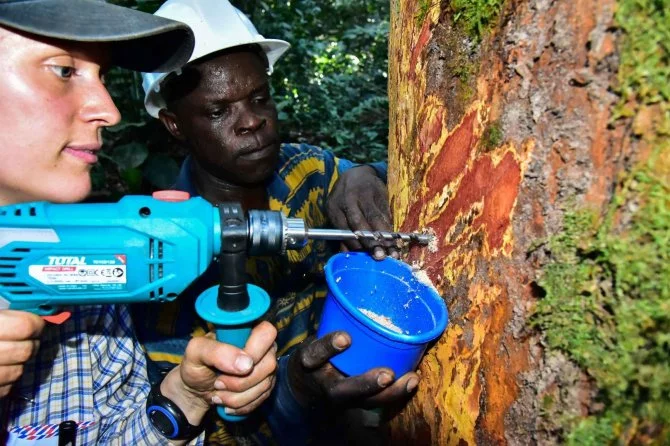Even though logging is prohibited in many of the world's threatened forests, that doesn't stop some companies from logging in those areas anyways, then lying about the origins of the timber. Soon, however, such groups may be foiled by the wood's chemical fingerprint.
One of things that makes timber fraud particularly difficult to verify is the fact that the wood will often pass through several countries before being sold. In other words, even though the seller may be located in a country where logging is permitted, the timber could originally have been harvested from another country where the trees are protected.
With this problem in mind, scientists from the Netherlands' Wageningen University & Research center set about collecting wood samples from a total of 991 timber trees in Central Africa and Borneo. The samples were taken from three different tree species – Red Meranti, Azobe and Tali – all of which are commonly harvested.

Using a mass spectrometer, the researchers subsequently analyzed the chemical content of each of those samples, measuring the ratios of elements such as calcium and magnesium. It was found that the trees of each species had a "chemical fingerprint" that was unique to their geographical area of origin. In fact, even trees of one species that were located just 50 km (31 miles) apart from one another had different fingerprints.
The scientists then developed a machine-learning-based algorithm for matching the fingerprint of a wood sample to one that was already on file for a tree of its species in a particular region. When tested by the researchers, that algorithm proved to be 86% to 98% accurate for identifying wood from specific parts of Central Africa, and 88% accurate for wood from Borneo. In independently conducted blind tests, the accuracy for Central Africa stood at 70% to 72%, although those figures may improve as the technology is developed further.
The study is being conducted as part of the Timtrace project, which also involves universities and research institutes in Cameroon, the Republic of the Congo, Gabon and Indonesia. It is described in a paper that was recently published in the journal Environmental Research Letters.
Source: Wageningen University & Research




